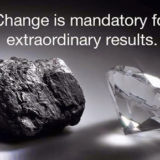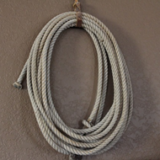
Our last article discussed how to conduct effective stakeholder interviews for the purpose of developing your organizational change strategy. This week we address a second important method of gathering qualitative data from stakeholders: focus groups.
Focus groups are an interactive way to get cross-functional perspectives on a single issue and can prove very helpful during the course of an organizational change program. They require only moderate effort to conduct and can yield loads of valuable information in real-time. Focus groups can be used to:
- Encourage discussion that generates opinions, beliefs, and attitudes about a specific topic of interest
- Learn about how and why a particular group of people approach an issue
- Build excitement and generate new ideas
For example, focus groups can be used to help define key roles and responsibilities for new processes, determine customer needs, and identify solutions to specific problems.
Follow this six-step process to conduct high-impact focus groups:
Step 1: Define the Purpose
- Clarify the scope and purpose
- Define expected outcomes
- Ensure that a focus group is the right tool to achieve objectives
Step 2: Identify the Participants
- Focus groups are ideally composed of six to eight people, though size can range from four to 12 participants
- Determine selection criteria for participants
- Invite participants with a positive message
- Strive to invite participants who do not know each other
- Ensure all participates are affected by the issue in some way
Step 3: Manage the Logistics
- Select an appropriate environment
- Select a moderator
- Develop a list of materials and aids required for the session
- Assign a note-taker to capture the session and ensure objectives and outcomes are met
Step 4: Develop the Questions
- Determine the number of questions necessary based on the duration of the focus group
- Follow key question with “probes” (3-5 bullet points) that allow the further investigation of a specific topic
- Four types of open-ended questions are typically asked during focus groups: Introductory, Transition, Key, and Ending
- Organize the questions in a logical order and develop a detailed session design and script
Step 5: Conduct the Session
- Incorporate a standard introduction
- Focus discussions on the key issues
- Use pauses and probing questions to further the discussion and surface core issues
- Listen for comments that are vague or inconsistent and seek more clarification
- Use subtle group control to manage experts, dominant talkers, shy participants, and ramblers
- Capture as much of the session as possible with good note-taking
- Capture all voices—there are no “dumb” answers
- Use an appropriate conclusion to summarize, seek missing points, and thank the group
Step 6: Analyze the Results
- Review results for consensus on an issue
- Identify patterns in responses and general themes
- Clearly identify reasons of disagreement and agreement
- Report any unusual circumstances that may have influenced the results of the focus groups
- Write a summary report of the key findings
- Ask several focus group members to review the report for accuracy and completeness
- Determine future data collection steps that need to be taken
 Following these guidelines will result in a high-impact focus group that yields quality information for you and your change management team. Download the Focus Group Process Tool. If you would like help conducting a focus group as part of your strategic business initiative, contact us. Also, you can find other valuable change tools like this one as part of the Change Accelerator toolkit.
Following these guidelines will result in a high-impact focus group that yields quality information for you and your change management team. Download the Focus Group Process Tool. If you would like help conducting a focus group as part of your strategic business initiative, contact us. Also, you can find other valuable change tools like this one as part of the Change Accelerator toolkit.












6 comments
William Newman
at 6:58 am
I don’t think we use focus groups enough and deteriorate into meeting cesspools out of habit. Focus groups aren’t just for product testing – they kick around ideas in ways less structured brainstorming techniques can’t consider.
Bill Casey
at 8:34 am
Jesse, nice list. I’ve seen focus groups used — sometimes unintentionally — as a way to support the predisposition of managers or design teams. I think your pointers might help people get at the real nuggets. Thanks!
Bill
Jesse Jacoby
at 9:08 am
Bill,
Thanks for the comment. You make a great point.
I, too, have seen focus groups (mis)used by management to validate existing biased views and opinions vs. exploring/probing issues in a truly open-ended manner. This is why it pays to have an objective, third-party consultant design and facilitate the focus groups instead of using members of the in-house project team.
-J
Barbara Pando-Behnke
at 10:03 am
Thanks Jesse –
This is really very practical and helpful information, as someone who has conducted focus groups before, but without knowing best practices in doing so.
I’m curious to hear any thoughts you have on conducting on-line focus groups, if you can. Thanks, Barbara
Jesse Jacoby
at 11:10 am
Barbara, Certain news programs, like CNBC, occassionally do this by showing multiple talking heads on the screen at once. Again, you need a fairly robust technology set-up to do this effectively, and most companies do have the infastructure to do it well.
Certain news programs, like CNBC, occassionally do this by showing multiple talking heads on the screen at once. Again, you need a fairly robust technology set-up to do this effectively, and most companies do have the infastructure to do it well.
I’m glad to hear you found the information helpful.
In terms of conducting focus groups online, it’s not ideal. In-person is always best because of the interplay of comments and the all-important nonverbal feedback. Having said that, with a robust technology environment you could potentially conduct a virtual focus group. You would need to be able to see the group or each participant individually on the screen — envision the Brady Bunch tv show intro
-J
web page
at 3:38 pm
I’m pretty pleased to uncover this website. I wanted to thank you for your
time for this particularly wonderful read!! I definitely
savored every bit of it and I have you bookmarked to look at new
things in your website.